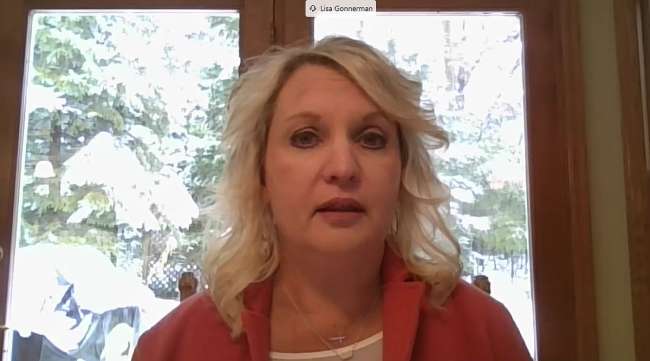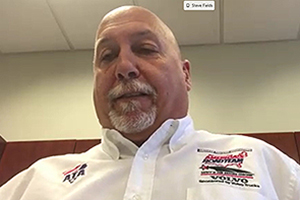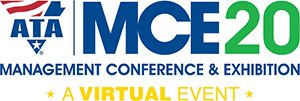Staff Reporter
Driver Coaching Takes Personal Touch, Positivity, Panelists Say

[Stay on top of transportation news: Get TTNews in your inbox.]
Coaching programs should be appropriately geared to the drivers who are receiving training, according to panelists assembled at American Trucking Associations’ Management Conference & Exhibition.
Lisa Gonnerman, vice president of safety and security at Transport America, said it’s important for companies to find out what an individual relates to because not everyone responds to coaching in the same way. Transport America is a trucking and logistics company based in Eagan, Minn.
Gonnerman participated in a virtual education session Oct. 23. During the coronavirus pandemic, which prompted MCE to move to a virtual format, Gonnerman said her company has used safety precautions such as online training and dispensing hand sanitizer.
At YRC Freight, professional driver Steve Fields said one successful approach involves drivers training one another. Fields, who has been with YRC for the past 24 years, said knowing the tractor, trailer, yard and traffic patterns associated with a driver’s routes can help with forming a connection.
“You have different drivers; you have different personalities,” said Fields, who also serves as an ATA America’s Road Team captain. “I think that’s where peer-to-peer makes it a little bit easier. A guy’s not so anxious to be coming in to talk with me as he might be with the boss.”
YRC Worldwide ranks No. 6 on the Transport Topics Top 100 list of the largest for-hire carriers in North America.
Positive reinforcement also is an important tool, the panelists said. Fields said he’ll congratulate a driver if he or she is able to stay calm behind the wheel during challenging situations, such as if a deer darts in front of the vehicle.
“[The] positive piece is critical,” Gonnerman said. “You can only hit the dog with the newspaper this many times.”
Fields said he approaches drivers with a smile and that the first few seconds of a conversation usually determine whether someone will accept coaching. He said the company’s policy is to refer “problem drivers” to management, which he hasn’t had to do in five years of training.
“You might have to go the long way around the barn, but if you keep at it, you can get to that driver,” Fields said. “I know what they’re going through because I go through it every day.”

Paul Ruiz, manager of safety policy at ATA, said it is important for trucking to represent the different coaching techniques various companies use. (Transport Topics)
At the federal level, Paul Ruiz, manager of safety policy at ATA, said it’s important for the industry to represent the different coaching techniques employed by various companies. Ruiz said ATA is working on comments related to the Federal Motor Carrier Safety Administration’s Split Duty Period Pilot Program. The program would allow participating drivers to pause their on-duty driving time with one off-duty period of at least 30 minutes, but not more than three hours.
Participation would be limited to a certain number of commercial driver license holders. To qualify, motor carriers must meet certain criteria, such as maintaining a crash rate that does not exceed the national average. During the virtual session, Ruiz said a useful sample would represent many coaching approaches to accurately reflect what the industry is doing.
“In our industry, ‘one size fits all’ just doesn’t apply,” Ruiz said.
The panelists noted that technology is often the subject of driver training programs. Gonnerman noted that the more technology a company has, the more policies and procedures it needs to establish within the organization. She encouraged companies to meet with their legal counsel representatives to ensure the policies are sound and worded well.

Steve Fields, a driver for YRC Freight, coaches other drivers. “You might have to go the long way around the barn, but if you keep at it, you can get to that driver," he said of coaching drivers with various personalities. (Transport Topics)
Fields acknowledged that new technologies may take time to get used to, but they often lead to more efficient operations. In his driving experience, he said electronic logging devices initially were challenging to adjust to.
“After I got used to it, I really started to like it,” Fields said. “It’s faster, it’s easier, [and] it’s more accurate. It actually takes minutes off of my day.”
Technology also has the potential to improve driving, according to Fields. He said it is especially useful if drivers are slipping into bad habits, such as getting too close to other vehicles or taking corners too fast.
“It’s just kind of a heads-up,” Fields said. “This is a great tool to kind of keep you in check.”
Want more news? Listen to today's daily briefing:
Subscribe: Apple Podcasts | Spotify | Amazon Alexa | Google Assistant | More





